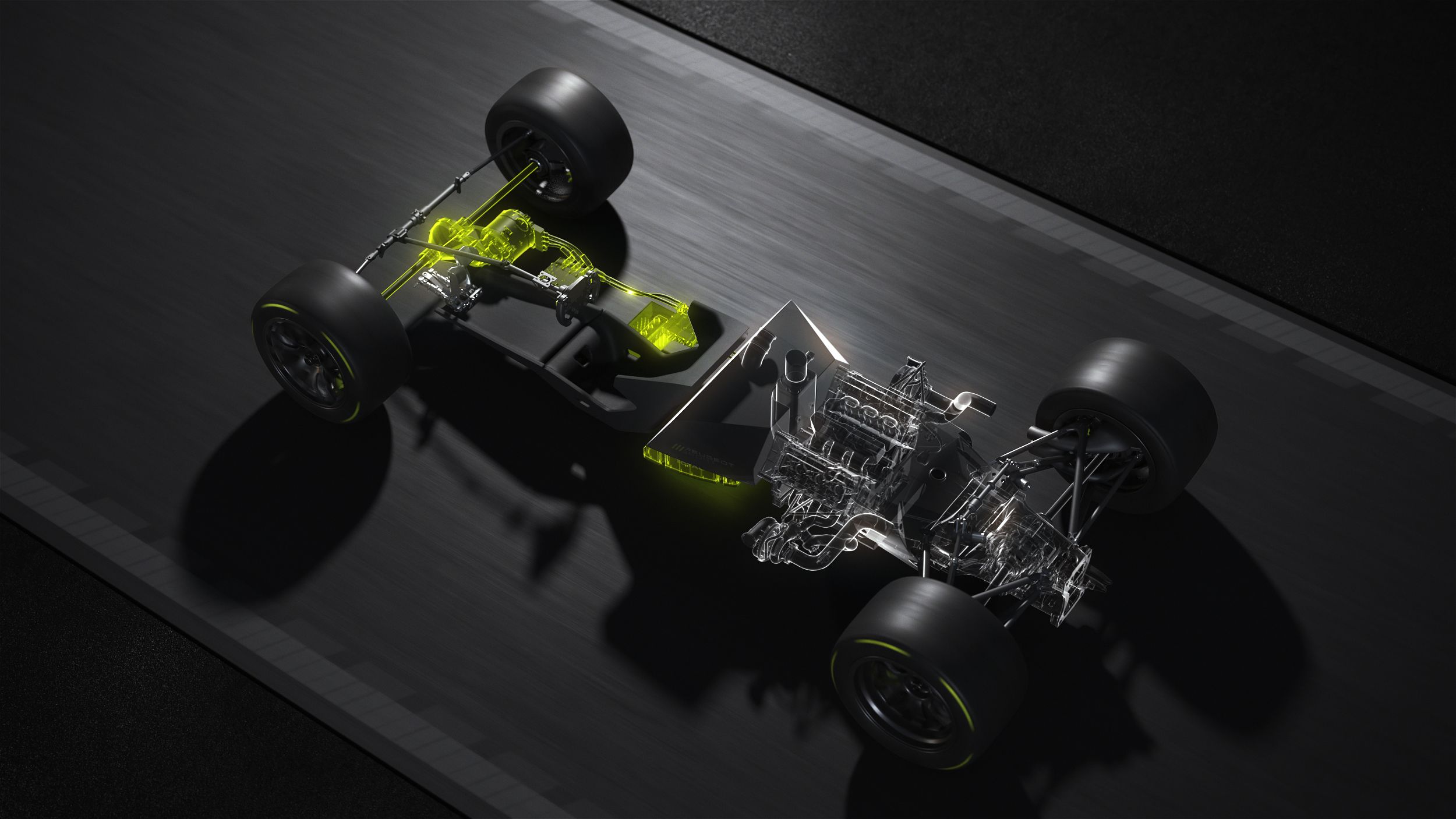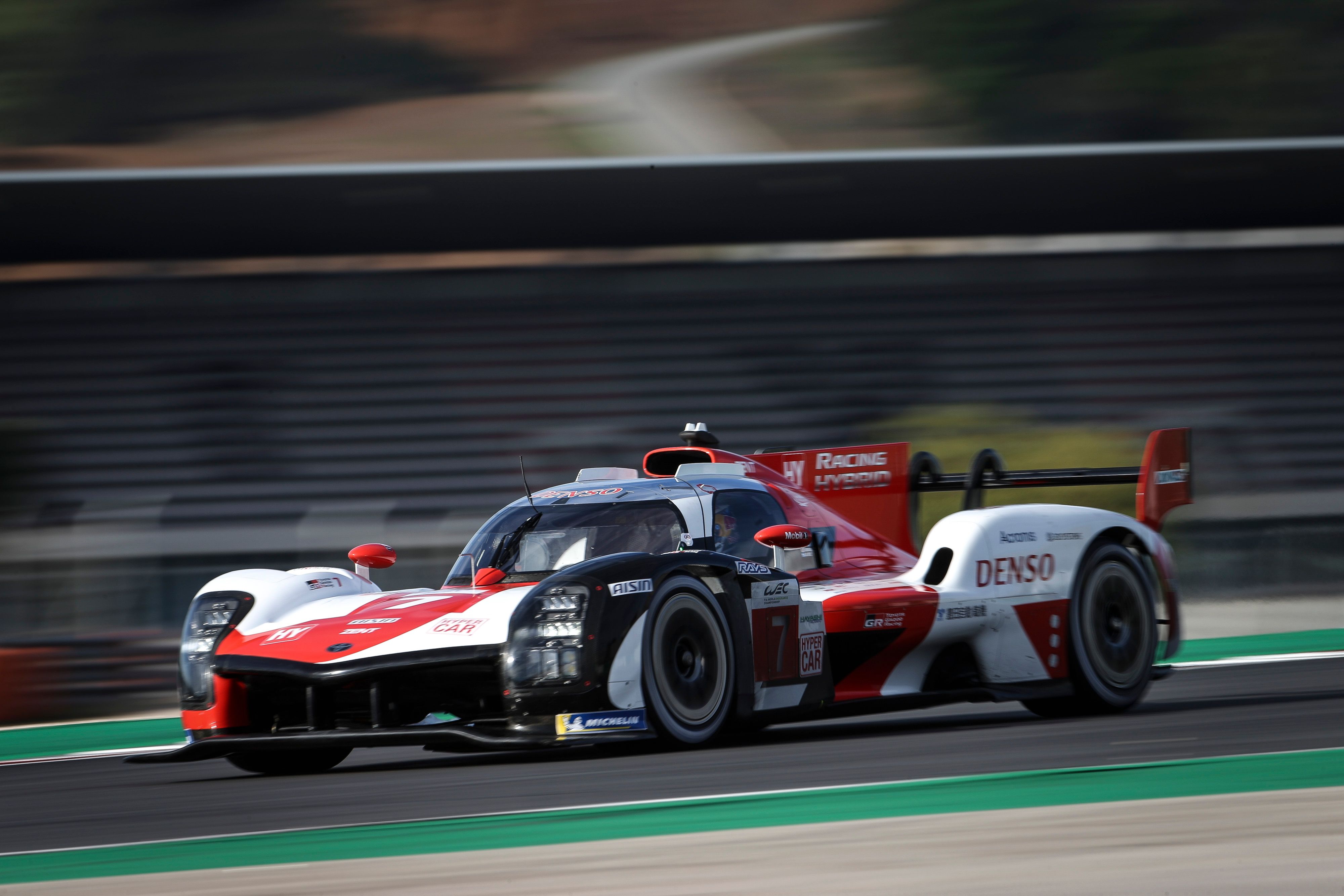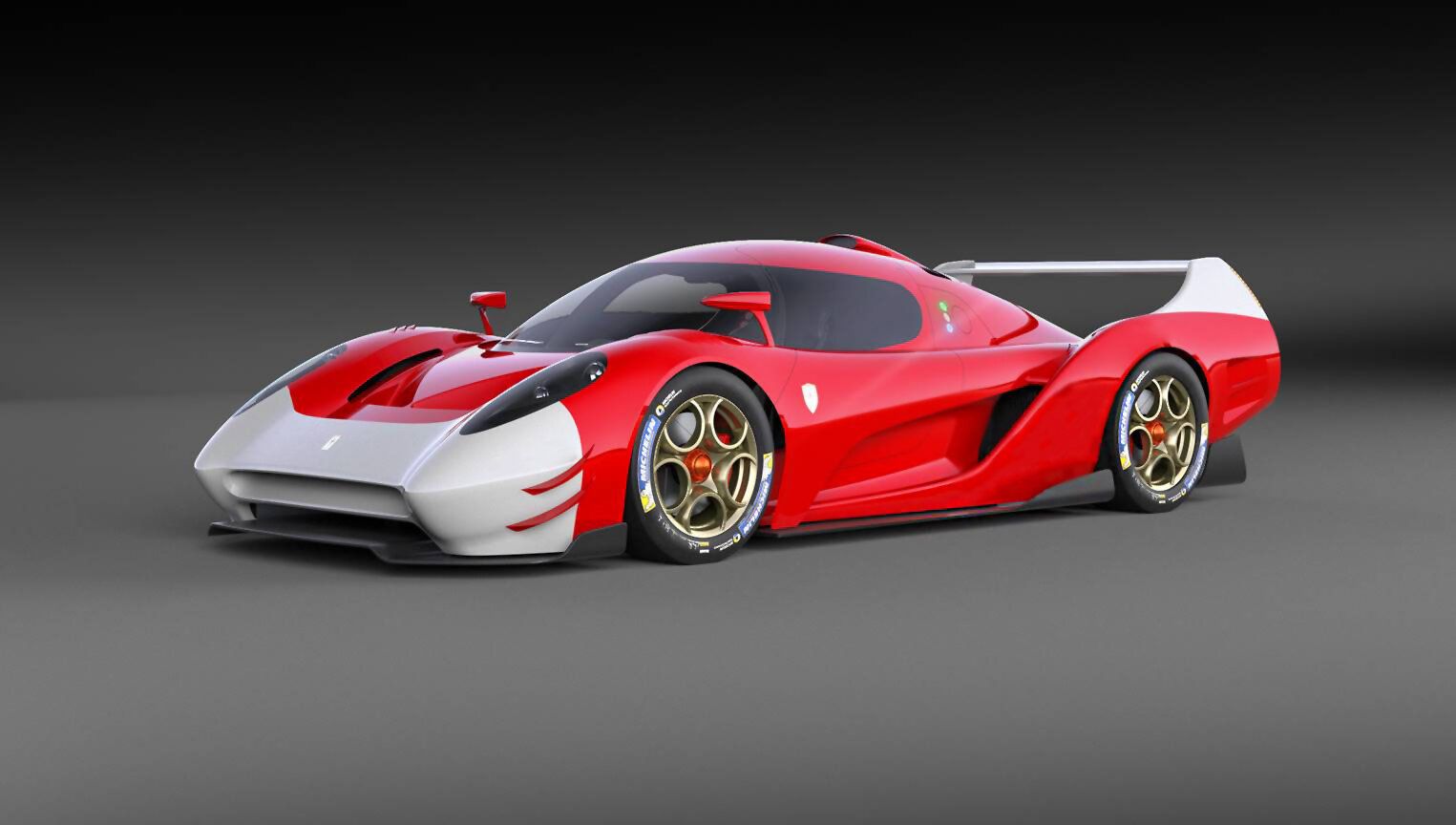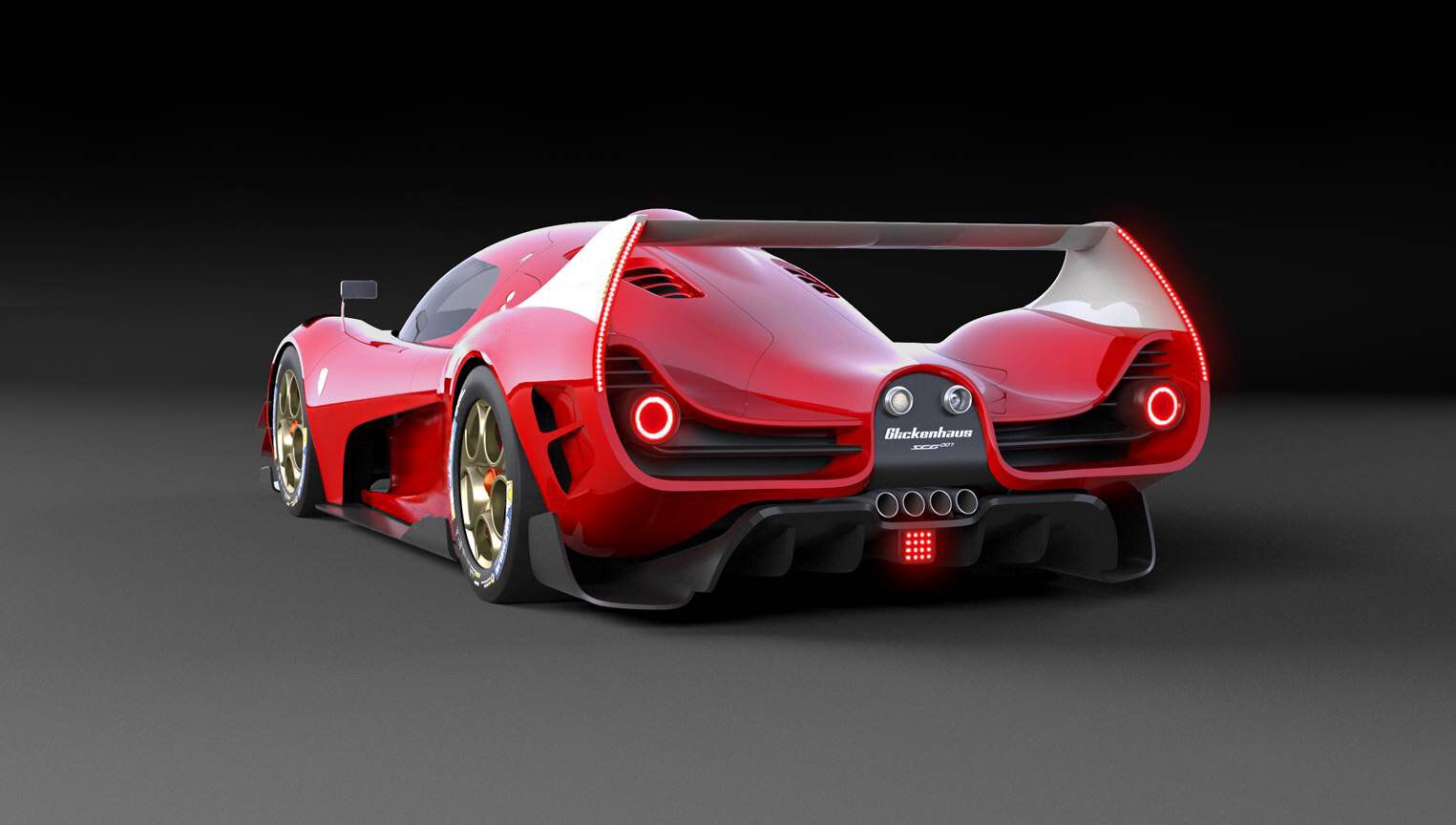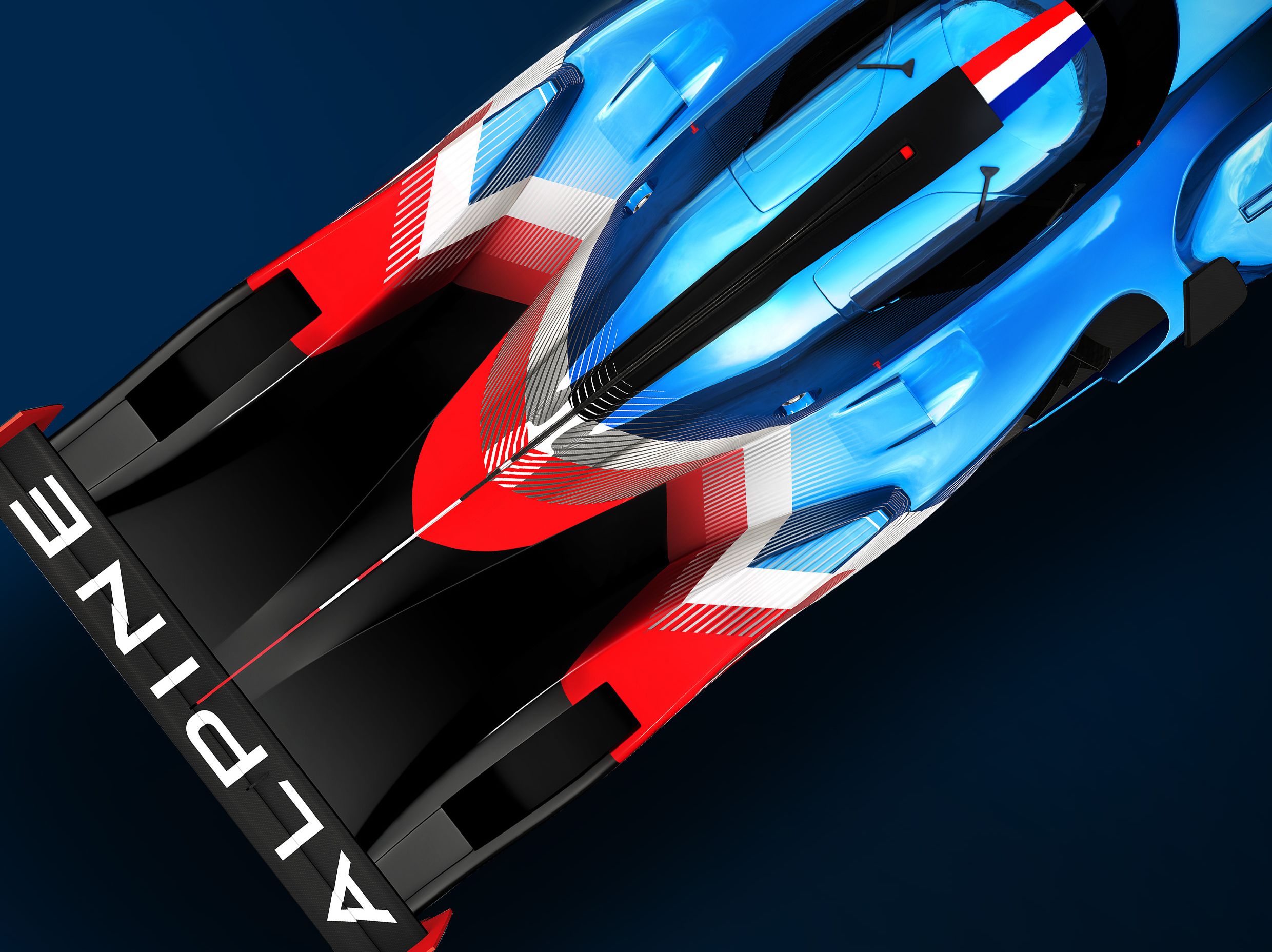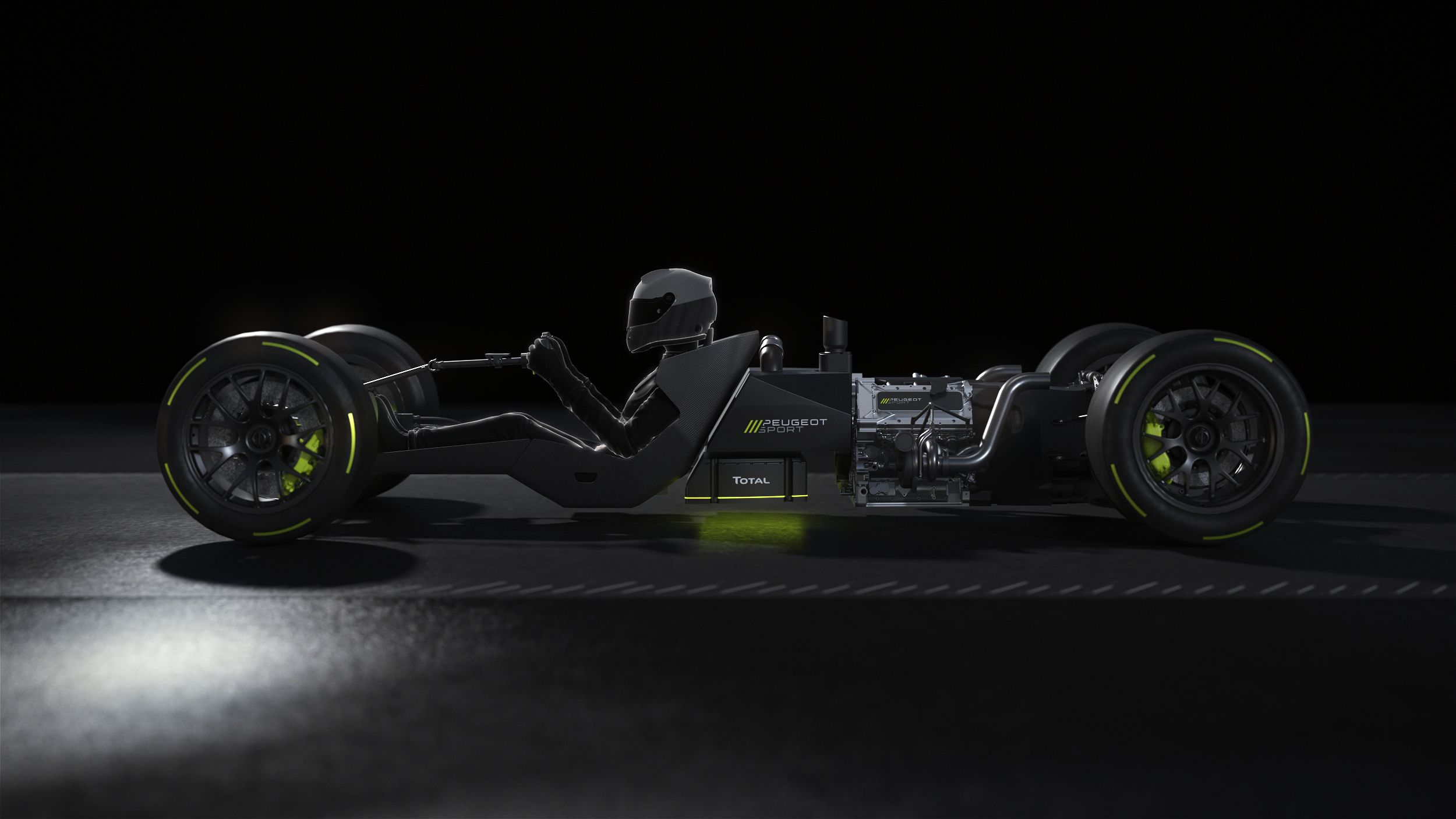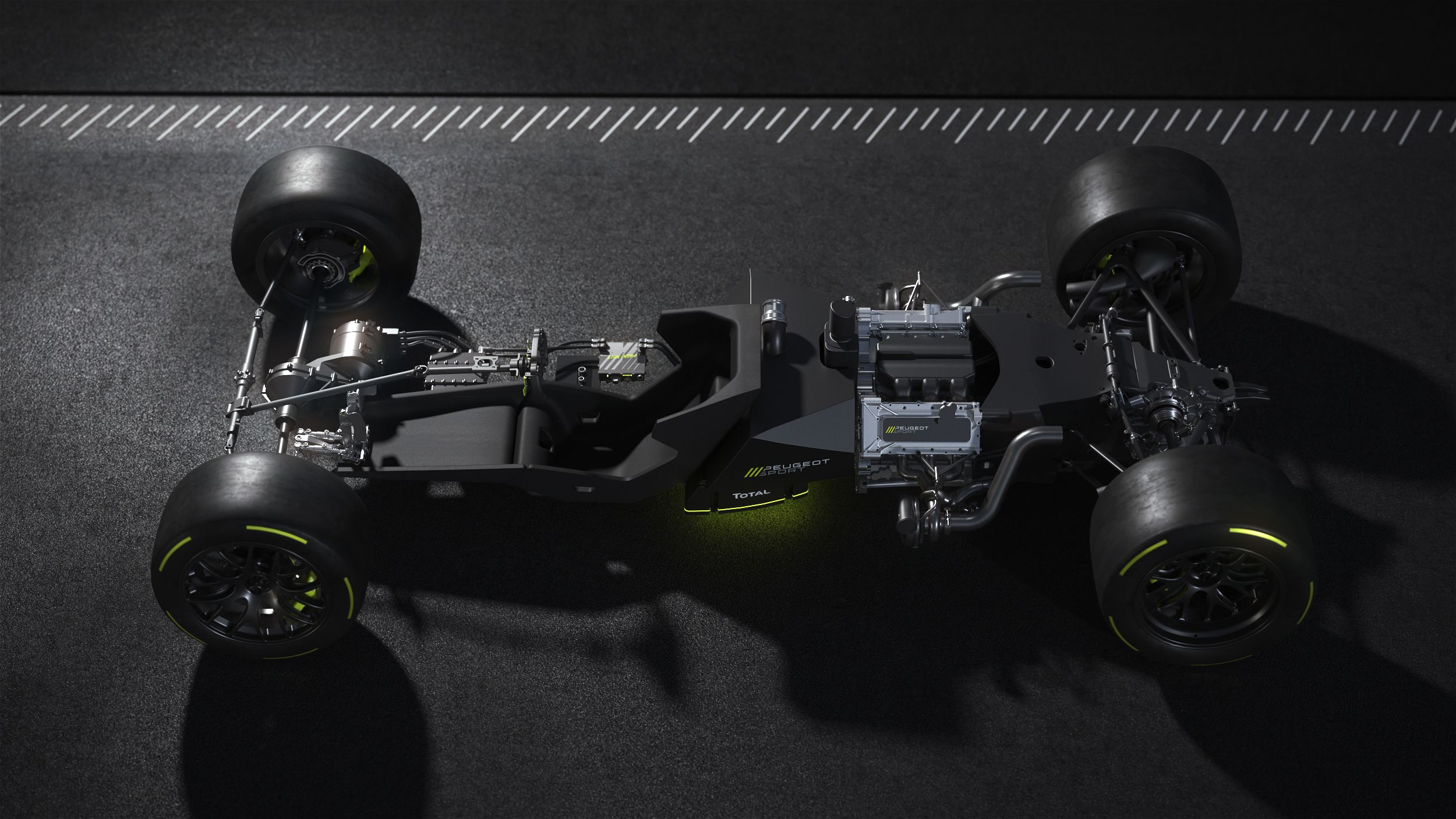Each year, only about 20 drivers get to do battle in Formula 1, often referred to as racing’s peak discipline, a series that remains only a distant dream for the vast majority of drivers. But, as a driver of a top-flight prototype in the FIA World Endurance Championship, you’re actually part of an even more exclusive club than that of Grand Prix motor racing participants.
You see, only five cars have been entered ahead of the 2021 season and each of these five machines can be driven by no more than three drivers giving us a rough total of about 15 (really) lucky people that will feature at the sharp end in places like Le Mans. We’re here to discuss who Toyota, Glickenhaus, and Alpine chose to fill these seats.
A wild combo of experience and raw speed
The FIA WEC is about to go on the road once again but, unlike the past eight seasons, there won’t be an LMP1 category to talk about when the band gets back together at Portimao in Portugal on April 4th. That’s because the expensive P1 rules have been replaced with the Le Mans Hypercar (LMH) rules.
In spite of this new fastest category’s openness, only five cars (up from three, so there's that) are likely to compete for six potentially grueling hours around the Portimao circuit in the vicinity of Algarve. Toyota will bring two of its Hypercar-spec GR010s, Glickenhaus too will have readied by then a pair of cars built to its own hypercar-compliant design (going by the name of SCG 007), and then there’s the French Alpine outfit that bucks the trend and has entered an old ORECA-built Rebellion R-13 LMP1 machine.
Peugeot will only join the freight sometime in 2022 and that’s also when LMDH cars are introduced although the likes of Porsche, Audi or Acura have already announced that they’ll debut their cars in 2023. The perennial ByKolles team owned by Colin Kolles also took the time to announce its desire to build a prototype to the new Hypercar rules but has not paid for an entry in the World Championship. As ever, ByKolles may show up from time to time if the FIA will bend over and allow race-by-race entries.
So, who are the 15-odd men (sadly, no woman is slated to race in the Hypercar class this year as of the writing of this story) who will enter, head-first, into a new era of sportscar racing? Well, there’s a mix of exuberance and youth, on the one side, and age and experience on the other. From past Le Mans winners like ex-Porsche stalwart Romain Dumas to ex-F1 stars like Kamui Kobayashi, the big names come in thick and fast. Also, while Peugeot is still one year away from debuting its own prototype, the French automaker has announced its driver roster already allowing us to also look at its seven-strong team too.
Toyota
It’s only fair that we kick things off with Toyota or, rather, Toyota Gazoo Racing as that’s the full name of the team. The part-Japanese, part-German team has been well and truly dominant all throughout the past two seasons winning race after race despite, at first, changes in the Equivalence of Technology (EoT) and then in the more straight-to-the-point ballast system used last year. The TS050 P1 cars have crushed their non-hybrid peers time and again which is another reason why the LMP1 class is now in the history books. Toyota hopes to keep adding to its already jam-packed trophy room in ’21 and, to that end, has decided to keep its driver lineup unchanged.
As such, we’ll again see reigning FIA WEC champions Mike Conway, Jose Maria Lopez, and Kamui Kobayashi at the helm of the No. 7 car while the No. 8 GR010 will be driven by last year’s 24 Hours of Le Mans winners Sebastien Buemi, Kazuki Nakajima, and Brendon Hartley. That is, by and large, enough of a pedigree to assure that both of these squads are viewed by many as favorites. And they should be as they’ve all been with Toyota for a while now, they know the team, the way it operates and, on top of all that, they’ve got the best-prepared car, to be frank.
While Glickenhaus has yet to actually finish the assembly of its first chassis, let alone complete one (1) testing mile, Toyota has already went through a couple of run-it-till-it-breaks tests and looks likely to emerge as the dominant force this season if the FIA gets the balance of performance right between the four hypercars and the grandfathered LMP1 car of Alpine. But let’s talk more about the drivers.
In Kamui Kobayashi, a veteran of 75 GPs, Toyota has a true one-lap ace (proven by his record lap around Le Mans that stands to this day, that’s also able to go blisteringly quick over an entire stint. While he’s never won Le Mans himself, he did score seven wins in the WEC with his team-mates and was on pole 10 times, his laps often being the main contributor to the No. 7 car’s starting position. Team-mates Mike Conway and Jose Maria Lopez, an ex-WTCC champion, are not as fast over one lap but can very much hold their own over a stint’s length with Conway boasting with the most experience having debuted with Toyota back in 2014.
Just like Conway, who grabbed a Toyota factory ride after a season in LMP2, Brendon Hartley earned his stripes at the wheel of the Murphy Prototypes ORECA 03 LMP2 machine in the early 2010s. Then came the dream opportunity to drive Porsche’s 919 Hybrid LMP1 car that the New Zealander firmly grabbed with both hands. He raced for Porsche all throughout the German’s marque involvement in P1 winning the World Championship twice along the way (in 2015 and 2017 respectively), conquering the 24 Hours of Le Mans in his final year with Porsche.
Following a brief spell with SMP Racing driving the Russian BR01 LMP1 car, Hartley became a Toyota driver and duly added another Le Mans win to his tally becoming the member of a select club of drivers to have won the fabled race with two different manufacturers. Conway’s partners, Kazuki Nakajima and Sebastien Buemi more than match him in both speed and experience as they’ve both been around the Toyota Gazoo Racing garage for years.
Buemi, just like Hartley, is a former graduate of Red Bull’s program and spent three seasons in F1 driving for Toro Rosso. Since 2012, he’s joined Toyota and, thanks to the Japanese manufacturer’s decision to shuffle its drivers around a few times in the past, he’s lent a hand to each of Toyota’s three outright wins in 2018, 2019, and 2020. He is also the champion of the so-called Super Season that began in 2018 and ended in 2019.
Nakajima is the other veteran of the squad as the successful son of Satoru Nakajima also joined Toyota for its maiden FIA WEC season almost a decade ago. Blending his commitments in Japan’s Super GT and Super Formula series, the latter of which he won in 2012 and 2014, with his FIA WEC drive, Nakajima has more than proven that F1 hasn’t been fair to him (which can also be said about Kobayashi too). Kazuki has been sharing the car with Buemi for a few years now, winning at Le Mans in ’18 and ’19 alongside Fernando Alonso.
Glickenhaus
American Jim Glickenhaus hopes to be remembered a few decades down the line as the Carroll Shelby or the Jim Hall of the 21st century. He’s been committed to bring back America to the world’s biggest endurance races and, after learning what long-distance events are all about by tackling the grueling 24 Hours of the Nuerburgring, Glickenhaus reckons he’s ready for the WEC and Le Mans.
He actually wants to win and, while he’s busy piling up hot takes that the internet amuses itself with, his team, known as Scuderia Cameron Glickenhaus, is busy putting together two SCG 007s for the team’s seven drivers to enjoy.
While his view that Porsche ‘won’t be allowed to win Le Mans’ because it has decided to field an LMDH car and not a Hypercar is seriously debatable for a number of reasons, what’s not up for debate is Glickenhaus’ commitment to the WEC which has shown itself once more in SCG’s choice of drivers. While the exact driver pairings are unknown right now, we’ve got folks here that have overall wins at Daytona, Sebring, and Le Mans to their names.
Pipo Derani, Romain Dumas, and Olivier Pla are the most famous of the lot, the Brazilian currently driving in IMSA for Action Express Racing. The Whelen Engineering driver first won the 12 Hours of Sebring piloting for Extreme Speed Motorsports which is also the team he drove for during his sole full-season assault on the WEC, in 2016. That, however, was in LMP2 and his only experience of the top class came virtue of a Rebellion drive. With his Dallara-built Cadillac (that took him to two additional Sebring wins) barely a few seconds off the expected pace of the new Hypercars, Derani should make a swift and fruitful transition if the Pipo-engined Glickenhaus holds its own against Toyota.
Olivier Pla drove for FoMoCo in recent times but has now signed to Michael Shank’s team to drive one of the ex-Penske DPi Acuras. He’s also racked up many a FIA WEC starts driving OAK Racing’s LMP2 Morgans in which he was often the fastest guy. Romain Dumas has won Le Mans twice (thus far), his last win coming five years ago with Porsche, the same brand that he’s been associated with for years. The 43-year-old, however, first won at Circuit de la Sarthe driving for Audi and also claimed a class win in the GT ranks. Last year, he finished fourth in the Big Race driving for Rebellion which means he knows the secrets of Alpine’s blue chariot.
Menezes also adds Rebellion experience, coming off a third-place finish in the 2019-20 drivers’ championship. He’s 26 years old and the only American driving for this American team. Briscoe and Westbrook, meanwhile, know each other (and know Pla) from their days with Ford and its GTE program but have also competed virtually everywhere else in the past 15-odd years.
While Westbrook has established himself as a GT ace who’s mastered the art of fuel-saving, Briscoe is Mr. Versatility as he won Daytona in 2020 in a DPi while also driving in Indycar. Both Westbrook and Briscoe look forward to what will be their first full season in the WEC. Finally, there’s Mailleux, one of SCG’s original drivers that have been with the team ever since it debuted the gorgeous Ferrari-based P4/5C a decade ago. He’s also driven for Signature Plus, Signatech, and a few other teams in both the FIA WEC and the European Le Mans Series. He finished 9th at Le Mans in 2011 driving a P2-classed ORECA.
Alpine
French automaker Alpine has actually won Le Mans overall over 40 years ago. It was back in 1978 that the Alpine-Renault A442 toppled Porsche’s dominance after years of trial and error that saw the yellow-and-black machines outpace Zuffenhausen’s finest but never going the distance. More recently, brand engineering has been the name of the game for Alpine as a partnership with the Signatech team has led to the birth of the highly successful Signatech-Alpine team. With Nicolas Lapierre as one of the drivers, the blue ‘Alpines’ (in actuality, re-badged ORECAs) have won the P2 class an astonishing four times. The team also took the title in the WEC twice.
It is, then, natural to see Lapierre step up to P1 together with Alpine. After all, he’s raced in LMP1 before being a factory Toyota driver between 2012 and 2014 (a last-minute call-up for Le Mans in 2017 notwithstanding). Before Toyota, he was a key part of ORECA’s crew and famously won the 12 Hours of Sebring in a year-old Peugeot 908 HDI FAP in 2011 together with Loic Duval and Olivier Panis. We’ll talk more about Duval below.
Partnering Lapierre in the only grandfathered P1 car in the field will be Matthieu Vaxiviere and Andre Negrao. The Brazilian is the only member of Alpine’s 2019-2020 crew to continue on with the outfit, both Thomas Laurent and Pierre Ragues being dropped from the lineup. This left an opening for 2019 Mobil 1 Twelve Hours of Sebring runner-up Vaxiviere to race, the Frenchman also having two Le Mans LMP2-class podiums to his name. However, both Negrao and Vaxiviere have never raced in the WEC’s top class, nor have they driven what is now the Alpine A480 Gibson that will be run by Signatech.
Peugeot
While not planning any race outings in 2021, Peugeot has already told everyone who will drive for the brand that represents the Stellantis group in the WEC.
Labeled “seven drivers, one team”, the group features three former F1 drivers in Kevin Magnussen, Jean-Eric Vergne, and Paul di Resta. Double Formula E champ Vergne has also starred in the WEC (with Manor) and the ELMS (with G-Drive Racing). Then there’s Di Resta who’s been able to blend his duties as an F1 pundit with a driving role at United Autosports, arguably the most successful P2 team of the past couple of seasons.
Then there’s KMag, the guy who almost won on his sportscar debut, his Chip Ganassi Racing Cadillac losing a tire while team-mate Renger van der Zande was battling for the win in the closing minutes of this year’s 24 Hours of Daytona. By the time he’ll have debuted with Peugeot, Kevin will have had an entire season’s worth of experience driving the CGR Caddy meaning the former Haas driver is bound to shine in 2022 with Peugeot.
Also “in” at Peugeot are Gustavo Menezes (which means his stay with Glickenhaus won’t stretch beyond this season), former Audi star (and partner to the legends that are Alan McNish and Tom Kristensen) Loic Duval and Mikkel Jensen. The Dane is amongst the fastest P2 drivers at the moment while Duval is a former WEC champion (in 2013 with Audi) and has driven in both the DTM and Formula E, as well as Formula Nippon, Super GT, and A1 GT. James Rossiter, another driver with plenty of experience in Japan, has been named as the program’s reserve and simulator driver. Rossiter has most recently driven the LMP1 ByKolles but his talents have usually been clouded by the smoke pouring from the faulty Rebellion’s engine bay meaning he might not be, in many people’s minds, an obvious pick for this program.
All in all, what’s surprising here is simply how few Frenchmen there are. Looking back at Peugeot’s last top-class assault with the 908 HDI FAP between 2007 and 2011, and we can’t help but notice a less-than-patriotic approach this time around. A decade ago, Peugeot would have Nic Minassian, Franck Montagny, or Sebastien Bourdais on its payroll. Now, the only French nationals are Duval and Vergne.
Conclusion
Each of the three combatants that we’ll welcome on the grid in 2021 will bring to the table a variety of famous names, some F1 ex-pats while other endurance racing veterans. However, you can’t help but feel Toyota’s decision to keep it consistent will eventually pay off, not least because the Japanese will have the most tried-and-tested package by the time Portimao rolls by.
Glickenhaus and Alpine have made a commendable effort to sign some hugely successful drivers but some are WEC rookies or newbies when it comes to racing the fastest prototypes in the world and this will matter when faced with a field of 25-odd slower cars for six or 24 hours. Peugeot too has picked some surprising names (like Di Resta, who hasn’t shone at United Autosports unlike Portugal’s Filipe Albuquerque) and only time will tell how those six guys will gel together.

